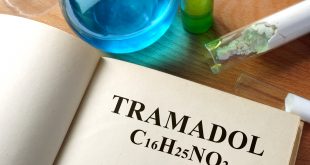Barbiturates
Main drug is phenobarbitone, which was first used as antiepileptic.
Chemistry
Derivatives of barbituric acid
Mechanism of action –In epilepsy
- Produce GABA mimetic effect increasing the GABA mediated chloride conductance leading to hyperpolarization, which is inhibitory.
- Decrease release of calcium mediated excitatory neurotransmitters, mainly glutamate.
So cause:
- Decreased spread of impulses
- Suppress foci
- Decrease post tetanic potentiation
- Increase in seizure threshold
Pharmacokinetics
- Absorption after oral administration is slow, absorption takes 7-10 hours
- Plasma protein binding is in the range of 40-60%
- About 25% of drug is excreted unchanged in urine, rest is metabolized by liver
- Half life is 100 hours
Adverse effects
1. CNS
- Drowsiness
- Vertigo
- Nystagmus
- Ataxia
- Paradoxical symptoms in children and elderly (agitation, excitement, hyperactivity, confusion)
2. Allergic reactions
Most important side effect, especially bolus eruptions
May cause dermatitis, skin reactions, etc.
3. Acts as enzyme inducer, so causes osteomyelitis and rickets
Increased metabolism of vitamin D
4. Megaloblastic anemia responding to folates
5. In pregnancy if given to mothers, leads to hypoprothrombonemia due to anti vitamin K effect. Treated by giving vitamin K during pregnancy, otherwise hemorrhage may occur in fetus.
Dose
Between 60-250 mg/day in divided doses. Effective plasma concentration is maintained between 10-35 µg/ml. avoided in children as there might be learning problems, esp. in school going children.
Methobarbitone
Similar effects, except drug has less adverse effects than phenobarbitone. Other effects are same.
Primidone
Chemically deoxy barbiturate, oxygen is replaced by two hydrogen.
Mechanism of action
Same as phenobarbitone, but drug is less potent, rather effects are due to two active metabolites:
- Converted phenobarbitone
- Phenyl ethyl malonamide
Pharmacokinetics
- Well absorbed after oral administration.
- Peak plasma concentration occurs after 3 hours
- Drug is metabolized in liver to active metabolite, some is conjugated with glucuronic acid
- Half life is 5-15 hours of parent and active metabolites.
Uses
- Main be used in grand mal epilepsy
- Partial seizures
- Status epilepticus
- Can be combined with other antiepileptic drugs, but not with phenobarbitone.
Adverse effects
Same as phenobarbitone as converted, except incidence of adverse effects is less. This is of advantage, especially in skin reactions.
Dose
750-1500 mg/day in divided doses. Start at low dose of 100 mg, increase gradually.
There is no effective plasma concentration, it is maintained according to levels of phenobarbitone.
If parent drug is more than10 µg/ml, there is more incidence of toxicity.
Drug interactions
When given with phenytoin, more conversion to phenobarbitone occurs.
Succinamides
Ethosuximide is most commonly used and most potent drug of group due to presence of alkyl group.
Methsuximide and Phensuximide have phenyl group.
Mechanism of action
Mainly acts by blocking calcium T channels in brain, responsible for generation of specific wave pattern of petit mal epilepsy. This drug mainly acts by blocking these channels in hypothalamus.
Pharmacokinetics
- Well absorbed after oral administration
- Peak plasma levels occur after 3 hours
- Plasma protein binding is not significant
- On prolonged administration, concentration in CSF is equal to plasma concentration.
- Drug is mainly metabolized in liver. Metabolites are inactive.
- Half life is 50-70 hours.
Therapeutic uses
Treatment of absence seizures or petit mal epilepsy.
Adverse effects
Mainly dose related.
- GIT –anorexia, nausea, vomiting
- CNS –drowsiness, lethargy, euphoria, headache, ataxia in high dose.
On prolonged administration:
- Parkinsonism like symptoms
- Photophobia
- In patients of psychiatric disorders can cause restlessness, agitation, irritability, confusion.
- May cause allergic reactions
- Blood dyscrasias including leukopoenia, aplastic anemia, thrombocytopenia
- Skin rash, articaria
Uses are declining. In place valporate is more used.
Dose
750-2000 mg daily in divided doses. We start with low doses of 200-250 mg
Effective plasma concentration is maintained between 40-100 µg/ml, dose is monitored.
Methsuximide and Phensuximide
Are less potent and less commonly used.
Continue Reading
Carbamazepine and Oxcarbamazepine
Benzodiazepines as Antiepileptics
Acetazolamide, Sulthiame and Newer Antiepileptics
 howMed Know Yourself
howMed Know Yourself




